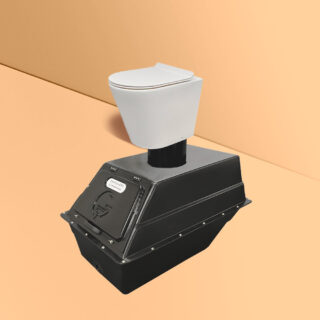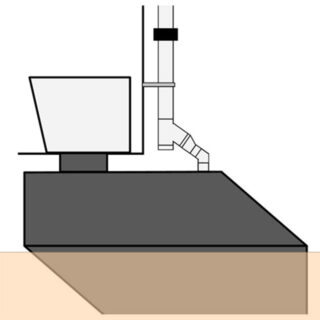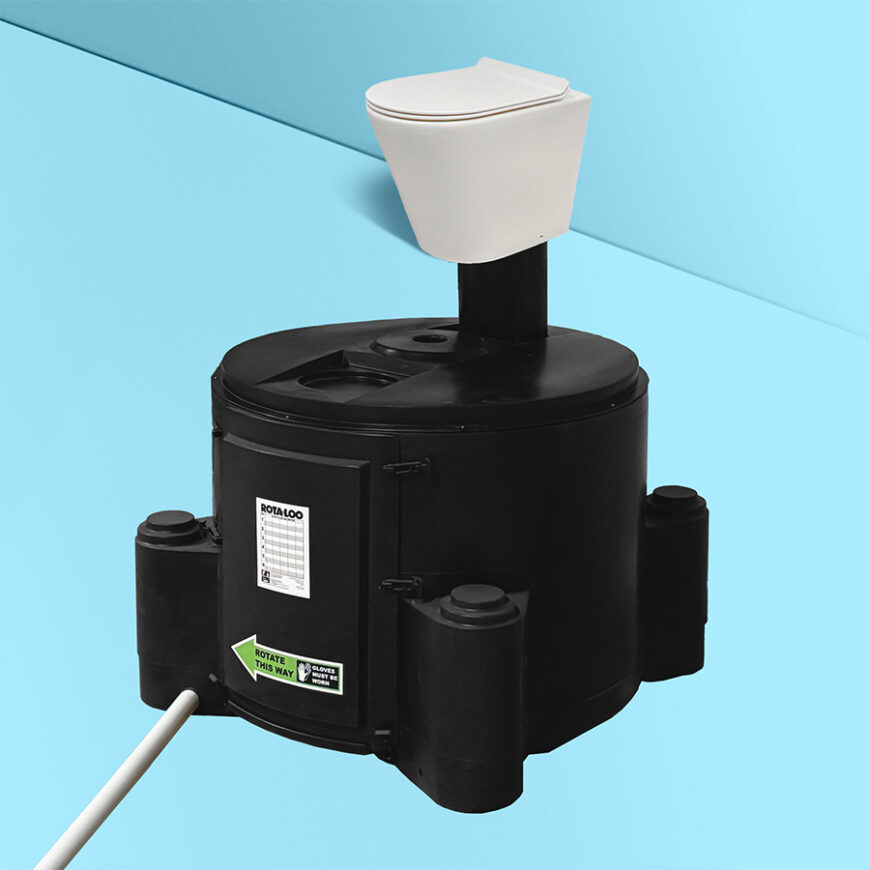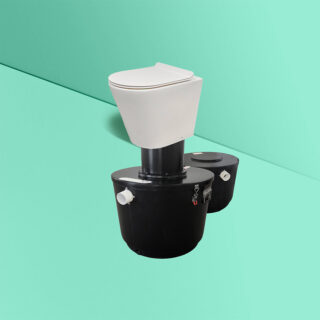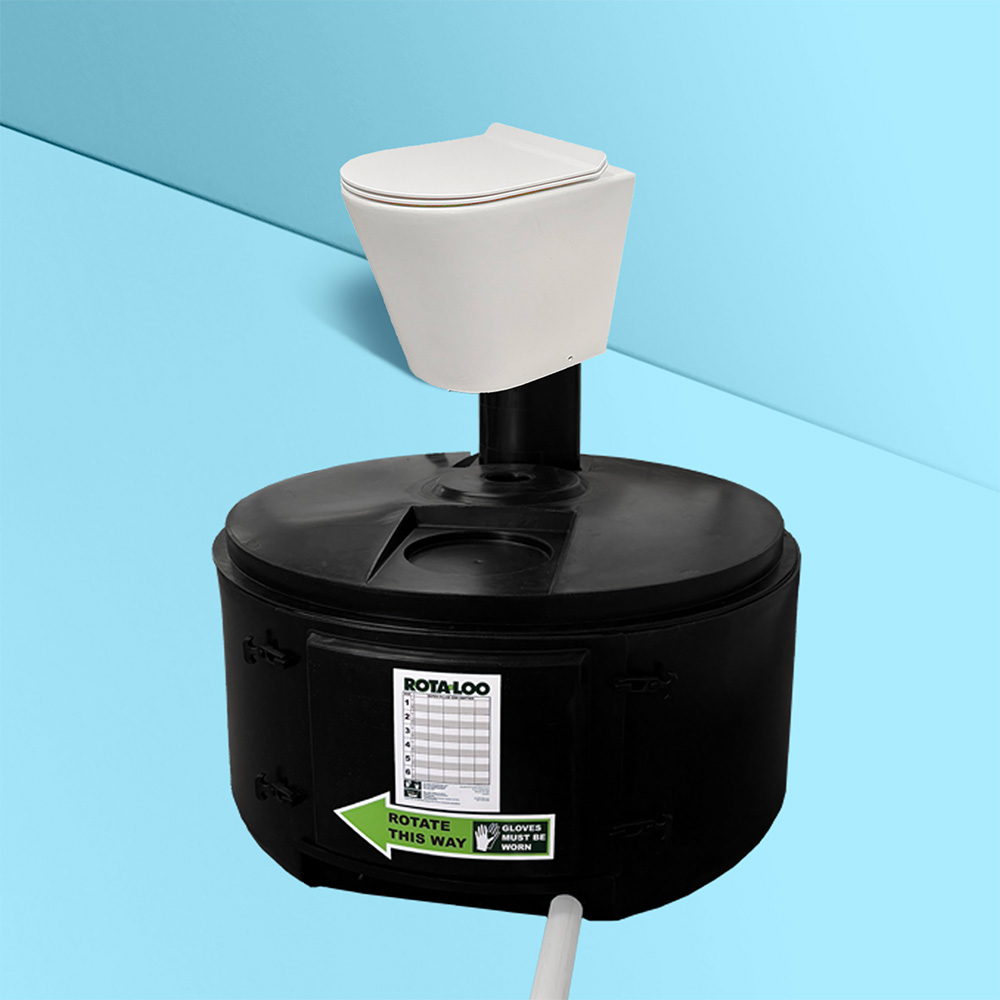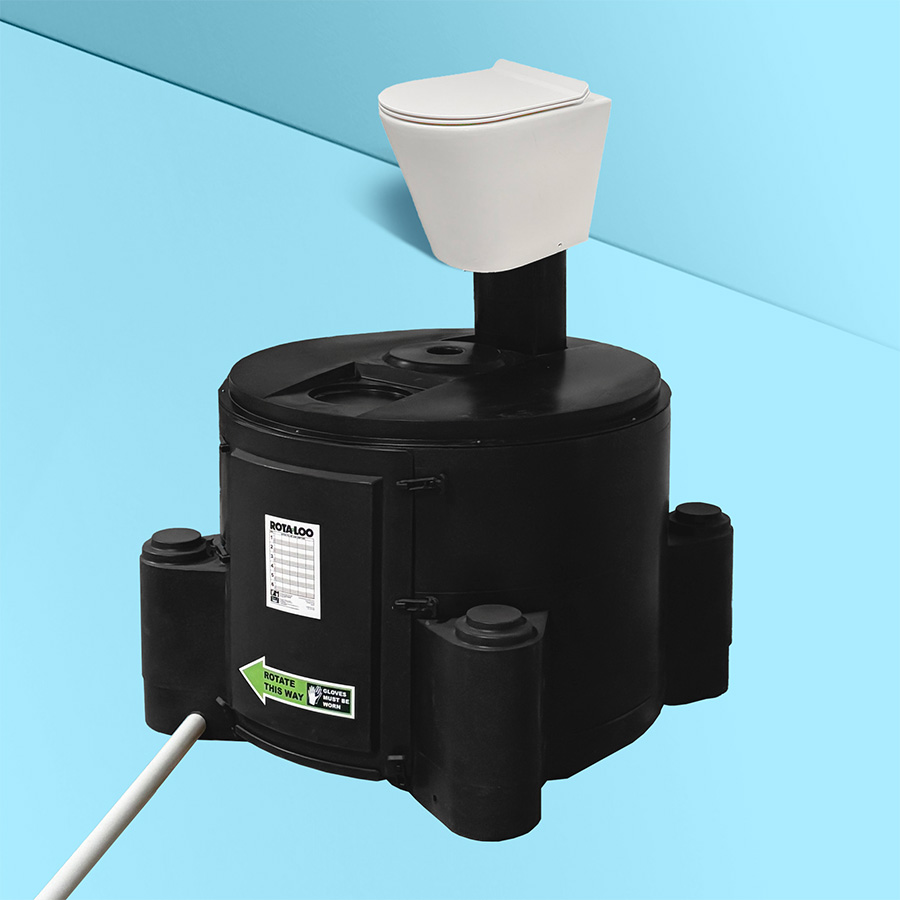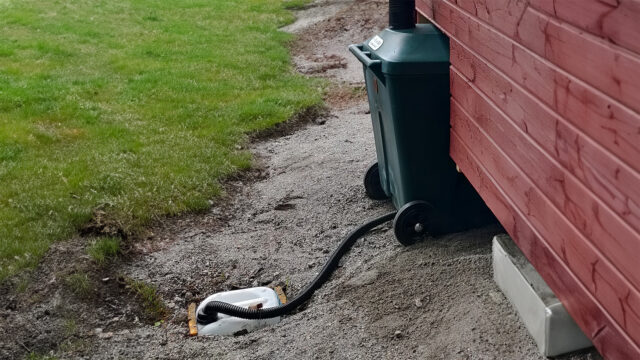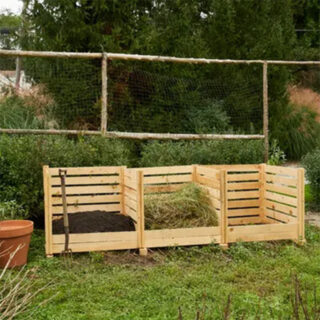Split-systems vs. Self-contained composting toilets: Learn Differences, Advantages and More!
This article delves into two types of composting toilets: split-system composting toilets and self-contained composting toilets. Each type presents unique installation style and benefits tailored to different needs and environments. Throughout this article, we will explore the fundamental design, operation, and advantages of each system, highlighting their ecological benefits and practical applications. By understanding these systems in detail, cabin owners and other offgridders can make informed decisions about which composting toilet solution is most suitable for their specific circumstances.
In this article we will discuss:
Split-system Composting Toilets
Split-system composting toilets are composting toilets with an external composting container or unit located directly below the toilet pedestal under the floor level. This way the toilet pedestal is apart from the composting unit.
The composting container under the floor is always positioned directly below the toilet seat so that all waste simple falls into the composting container by the force of gravity. This includes urine and toilet paper.
Advantages of Split-system Composting Toilets
Generally, split-systems have the advantages of:
- Larger capacity
- Aesthetic design
- Familiar use
- Service being outside bathroom
Probably the greatest of these advantages is the option to have larger capacity compared to self-contained waterless toilets. The split design of having the external composting container usually means that the composting container can be larger in volume. Consequently, the service intervals are longer and hence the toilet simply needs less frequent maintenance. There are split-system composting toilets that may operate years before needing any service in limited use.
The second advantage with split-systems is that the toilet seat itself does not have to have any of the mechanics related to composting toilets. Thus, with split-systems you can have aesthetically pleasing, modern-looking dry toilet pedestal inside your bathroom that is used just like in a normal flush toilet, and hence the use of the toilet is familiar to everyone including guests and other public / rented use scenarios.
It should also be said that with split-systems it is often convenient to have the service concentrated outside so that the bathroom itself stays intact during the service of the toilet.
Disadvantages of Split-system Composting Toilets
Even though split-systems are terrific composting toilets, they have few downsides as well. The most obvious of those is that, while many people would prefer a split-system composting toilet, they simply do not have the clear space available under their house floor level for the external composting unit. The lowest of our split-systems is the CF 4 continuous composting toilet that requires a minimum space of 13 inches below the floor level when partially buried underground.
The other disadvantage split-systems have is that they generally tend to require more planning and work when it comes to installation of the toilet. Therefore we recommend to be in touch with us before purchasing a split-system composting toilet if you feel like you need help in choosing the best composting toilet for your needs.
While split-system composting toilets are great waterless toilet solutions, probably the most common type of waterless toilet is the self-contained waterless toilet, so let us explore those next.
Self-contained Waterless Toilets
Self-contained waterless toilets are a type of waterless toilets that contain all of the toilet waste within the single toilet unit itself. In other words, there is no external container located outside the unit for the waste. Since not all self-contained waterless toilets are true composting toilets, it is best to use the umbrella term waterless toilet in this context.
Self-contained waterless toilets are installed directly on floor level.
Advantages of Self-contained Waterless Toilets
Self-contained waterless toilets have also have their own pros and cons. The upsides include:
- Easy installation directly on floor level
- Smaller size fits into smaller space
- Usually more affordable than split-systems
Since self-contained waterless toilets are installed directly on floor level, there is no need to make a hole through bathroom floor like with split-systems. In this sense, the self-contained waterless toilets are also easier to install and take into use.
Self-contained waterless toilets are generally also small sized so they fit into small spaces not only in cabin and tiny homes, but also in RVs and boats.
Although self-contained waterless toilets come in different price ranges, generally self-contained waterless toilets are a little more affordable than split-systems. This is largely due to small size and therefore lower shipping costs associated with self-contained units.
Disadvantages of Self-contained Waterless Toilets
The usual drawback with having a self-contained waterless toilet is that if you have a lot of users, or if the use of the toilet is full-time, year-around, then you may need to empty the toilet more frequently than if it was a split-system composting toilet. That is because generally self-contained waterless toilets have a smaller capacity in terms of volume. Therefore, seldom do self-contained waterless toilets make a good fit into public use. However, for most waterless toilet users this is not a problem because typically waterless toilets are used in cabins and other holiday homes during weekends only, for example.
Another thing to note about self-contained waterless toilets is that many self-contained waterless toilets also fall into the category of urine-diverting toilets that have a specific seat design that separates urine already within the seat of the toilet. For most people it may take some time to get used to a urine-separating toilet. This is a thing that some might also consider a drawback with self-contained waterless toilets.
However, that is not the full story as for example in our selection we have the Oz-e-Pod, Tiny-Pod and Green Toilet Easy that are not urine-diverting toilets by definition, but they are obvious self-contained waterless toilets.
Which is Better: Split-system or Self-contained Waterless Toilet
Having discussed the split-systems and self-contained waterless toilets, we may ask: which one is better? Well, the answer of course depends on the case. Let’s take few examples:
Case 1: 2 people, seasonal use, weekend cabin

Let’s assume you are looking for a waterless toilet for your off the grid cabin that you visit occasionally during summer time with your loved one. Sometimes your kids may join you, but usually it is just the two of you. In this case, you would probably be well off with either split-system or self-contained waterless toilet, when it comes to the capacity of the toilet. Therefore, in this case, which is better, is more determined by the structure of your building. If you can easily accommodate the external composting container under the cabin, below bathroom, then the split-system might be the sleekest solution. However, a self-contained waterless toilet, like the Oz-e-Pod, might be just as good.
Case 2: 3-4 people, year-around tiny house rented in Airbnb

In this case, you might want to exclude the smallest of self-contained waterless toilets from your list of options. Especially the self-contained urine-diverting toilets probably would not make the best fit, as you would not only need to instruct the tiny house visitors on how to use the toilet, but also let them know how to empty it if they are staying more than just a night.
Again, if split-system composting toilet would be possible in terms of the structure of the building, that is what we would recommend. This way the tiny house visitors would not need to be instructed how to use the toilet nor should you be concerned of the capacity running out too early.
Case 3: 5+ people, permanent residency or public use

In this case, we would recommend a split-system composting toilet because a self-contained waterless toilet might not have the adequate capacity to handle permanent use of 5 or more people, not to mention year-around public use.
Even in this case, if there is no space for a split-system with an underfloor composting container, there is an option to build a composting toilet using the Green Toilet 330 composting toilet containers.
As the number of users increases and/or the use of the toilet becomes more year-around, everyday you probably want to plan for a split-system composting toilet, because they usually have higher capacity and therefore need less frequent emptying.
Conclusion
Throughout this exploration of split-system and self-contained waterless toilets, we have unpacked the unique designs, advantages, and limitations of each system. Split-system composting toilets, with their separate waste processing units, offer higher capacity and less frequent maintenance, making them ideal for larger groups or more frequent usage. On the other hand, self-contained waterless toilets provide ease of installation and a compact design suited for smaller spaces or less frequent use.
The choice between these two types of composting toilets will largely depend on individual needs, such as the available space, the frequency of use, and the specific requirements of the installation environment. For those managing larger properties or needing a more permanent solution, the split-system may provide the robustness required. Conversely, for weekend cabins or small homes where space and simplicity are paramount, a self-contained unit might be the perfect fit.

Who We Are
At Waterless Toilet Shop we are a dedicated team of dry toilet experts based in Henderson, Nevada. As a family-owned company with deep roots in Scandinavia and Australia, we bring a blend of global insights and local expertise to every product we create.
At Waterless Toilet Shop, we do more than just design and manufacture innovative composting toilets; we also use them daily. This hands-on experience allows us to continuously improve our products and ensure they meet the high standards of functionality and sustainability that our customers expect.
We are committed to living the eco-friendly principles we teach, making our solutions not just part of our business, but a part of our lives. Join us in embracing a more sustainable future, one flush at a time.
Read Our Story





